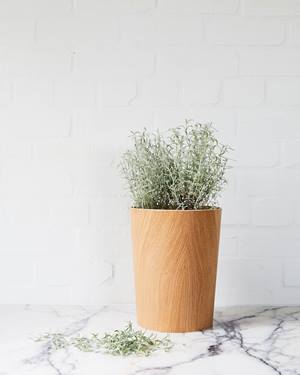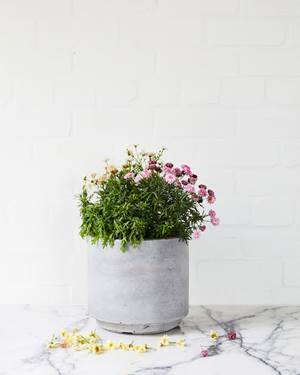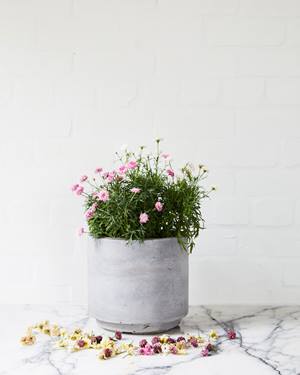Autumn and Winter Gardening Calendar
12 May 2020 | Jason Chongue
Gardening is a great way to get offline and literally get your hands dirty. It's also an activity that isn't relegated only to the warm weather. For those who are relatively new to plant care, there are things you can and should do for your plants year round. You can also curate your garden to be seasonal so that you have something beautiful to look forward to year-round. Below we have some seasonal change tips and cold-weather gardening activities such as pruning and deadheading that you can do from Green by Jason Chongue.
Seasonal Changes & Plant Care
A seasonal garden is so rewarding. I can’t think of anything better than being surrounded by plants that respond to the changes in temperature and light throughout the year, altering our spaces and reminding us that we live in a natural world.
My garden is layered with deciduous plants and heirloom flowers – they bring me so much joy when they change colours. The autumn foliage on my Japanese maples serves as a reminder of the importance of rest. When the leaves change from green to red, Nathan and I begin our own season of rest and hibernation.
As the seasons shift, make sure to be conscious of how your plants respond to climatic changes, both indoors and out. It’s important to remember that your gardening techniques will need to adapt to the different conditions. The major shifts you’ll want to make concern water, light and temperature.
Autumn and Winter Gardening Calendar
Gardening becomes easier when you’re prompted to do certain tasks throughout the year. If you let the list of undone chores get out of hand, it will simply make it harder to catch up. It’s not just about the growing season, but also about prepping to ensure plants have a good go at thriving when it is time for them to grow.
It’s important to remember that the plants you’re likely dealing with are diverse living things and have come from all corners of the globe. They are different, but they all respond to the seasons. Some lie dormant in the winter while others thrive in the cold. Some flourish in the warmth, waking up in spring and running rampant in summer. To honour your garden, whether indoors or outdoors, you need to nurture them through these yearly shifts.
Autumn- Remove and compost any fallen foliage to keep your garden tidy. - Collect any summer seeds from your plants so you can plant them for the following year. - Plant winter flowering plants, bulbs and seeds so your garden flourishes throughout the cooler months. - Deadhead any summer flowering plants (page 146). -This is a good time to perform a hard prune of any shrubs and trees that may have grown out of control. - Pay attention to the shorter days for your indoor plants. Rotate your plants to a brighter winter spot so they can soak up some much-needed sunlight. |
Winter-Plant deciduous trees and shrubs. - Prune deciduous trees and shrubs. - Plant spring edibles and flowering plants. - Apply organic fertilisers to deciduous trees and shrubs. - Adjust watering indoors in response to cooler weather, but also pay attention to artificial heating. |
How to prune and shape your plants
Pruning and shaping your plants can be daunting, but it really helps promote new, dense growth. When to prune and shape will depend on what type of plant you are pruning, but a good rule of thumb is to prune just before the growing season.
YOU WILL NEED
Secateurs
STEPS
1 Select a plant that needs shaping. Often plants will grow to one side or lack fullness.
2 Begin trimming your plant back to the height you prefer, using this height as your mental guide as you continue on. The best place to prune the stem of a plant is typically above a node or leaf. Try to always prune branches diagonally.
3 Gradually prune branches over the entire plant. Make sure to stand back every now and then, using your eye to judge the shape as you prune.
4 Prune your plant a little tighter if you want to promote compact growth.
 |
 |
 |
 |
How to deadhead your flowering plants
When the blooms on flowering plants start to fade or die, it’s time to deadhead them to promote additional flowering and new growth. With edible herbs like basil, you might just want to pinch off their tips with your fingernails to keep them from flowering and going to seed. Pinching also promotes branching and helps control height.
YOU WILL NEED
Secateurs
STEPS
1 Select a plant that needs deadheading.
2 Prune old flowers back to healthy growth, which is usually just below the flower stem.
3 Make sure to prune spent flowers over the whole plant.
4 Continue removing spent flowers, leaving only ones that are still fresh.
 |
 |
 |
 |
This is an edited extract from Green by Jason Chongue.
Available now in bookstores and online
Click here to find your preferred online retailer.





